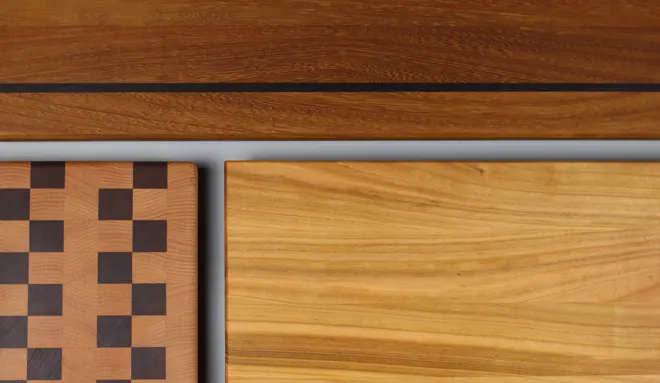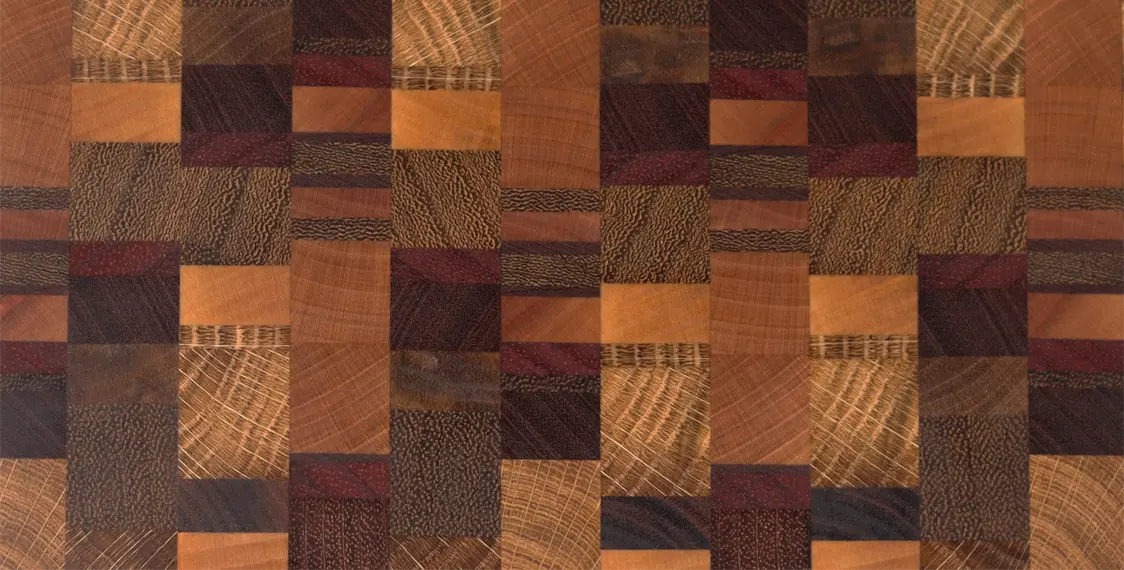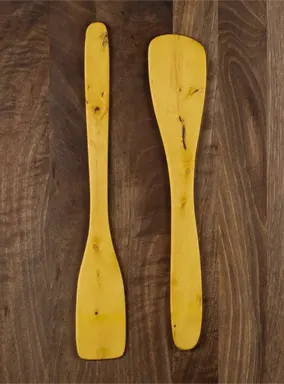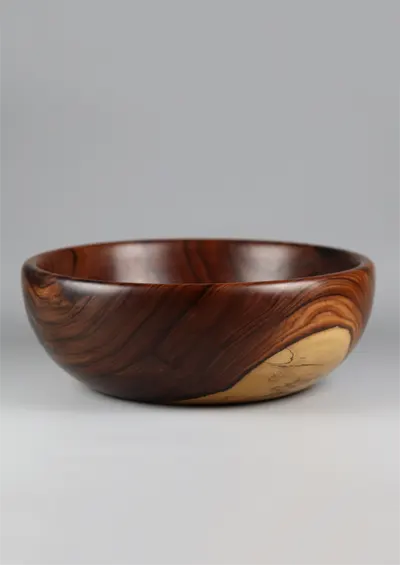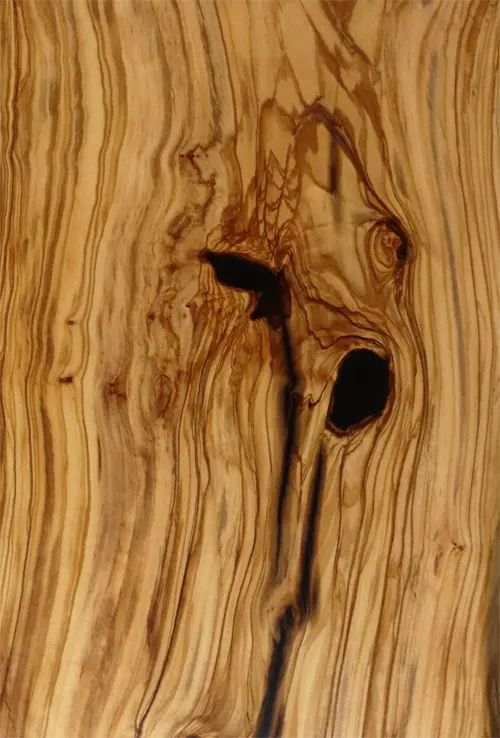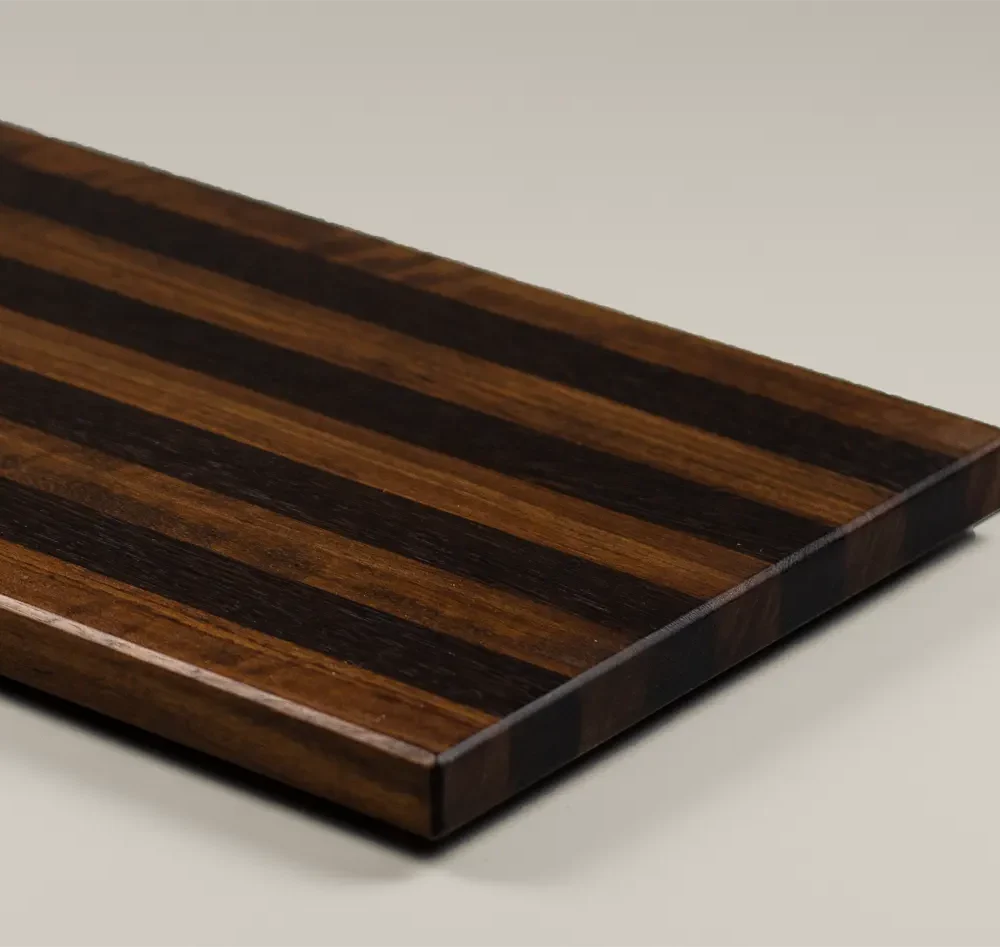Mongoy Wood: Uses and Characteristics
Mongoy wood, also known as Ovangkol, is a tropical species from West Africa that has gained popularity due to its remarkable physical characteristics and versatility in different applications.
Below, we explore in depth what Mongoy wood is, its properties, specific uses in cutting boards, and some important considerations about this wood.
What is Mongoy wood?
Mongoy wood, from the tree Guibourtia ehieis a tropical wood distinguished by its dark brown heartwood and pale yellow sapwood.
The appearance of its grain, often interlocked or straight, offers a unique visual appeal that can range from grayish brown to reddish tones.
Due to its natural strength and beauty, it is often used in decorative and functional applications such as furniture, veneers and joinery.
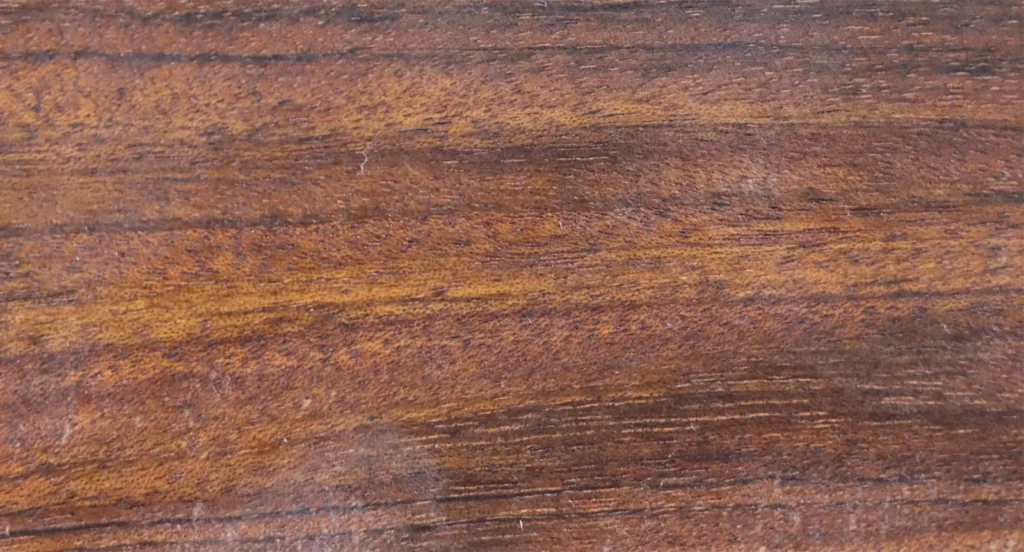
Properties of Mongoy wood
Hardness and density
With a density of approximately 800 kg/m³, Mongoy wood is a relatively heavy and hard species. This characteristic gives it excellent resistance to impact and wear, making it suitable to withstand adverse conditions such as humidity or prolonged exposure.
Dimensional stability
Mongoy maintains its shape in the face of temperature and humidity variations, which reduces the risk of warping. This property is key for outdoor uses and for high-demanding products such as luxury kitchen tables.
Natural strength of mongoy wood
This wood is naturally resistant to insects and rot, making it ideal for applications in humid or outdoor environments without the need for intensive treatments.
Table of technical characteristics of mongoy wood
| Property | Value |
|---|---|
| Scientific name | Guibourtia ehie |
| Common names | Mongoy, Ovangkol |
| Origin | West Africa (Nigeria, Cameroon, Gabon, Congo, Central African Republic) |
| Colour | Sapwood: pale yellow; Heartwood: greyish brown to dark brown with dark veins |
| Fiber | Straight, occasionally braided |
| Grain | Fine to medium |
| Density (12% humidity) | 800–820 kg/m³ |
| Janka hardness | Approximately 1,860 lbf (8,270 N) |
| Hardness (Chalais-Meudon) | 7.6 (hardwood) |
| Compressive strength | 690 kg/cm² |
| Static flexural strength | 1.550 kg/cm² |
| Modulus of elasticity | 157.000 kg/cm² |
| Coefficient of volumetric contraction | 0.49–0.55% (medium-nerve wood) |
| Natural durability | High resistance to fungi and insects |
| Impregnability | Sapwood: impregnable; Heartwood: slightly impregnable |
| Workability | Sawing: requires sharp tools; Planing: may cause peeling; Gluing: no problem; Nailing and screwing: requires pre-drilling |
| Drying process | Slow, with slight risk of deformations and cracks |
| Finish | No problem |
| Common uses | Fine furniture, cabinetmaking, interior and exterior carpentry, musical instruments, decorative veneers, turning |
The Mongoy in cutting boards and service boards
The use of Mongoy in the manufacture of cutting boards is rare but is becoming increasingly common due to its durability and resistance to cuts. Its main advantages for this type of utensils are:
Wear resistance
Due to its high hardness, Mongoy wood is able to withstand the constant impacts of knives without suffering significant surface damage. This prolongs the life of the cutting boards and makes them ideal for professional and domestic kitchens.
Hygienic properties
The density of Mongoy prevents deep penetration of moisture and bacteria, which helps keep cutting surfaces cleaner and healthier.
Visual aesthetics
Its unique veining and dark tones make it a visually attractive option. In kitchens where aesthetics are a priority, Mongoy adds a touch of elegance and distinction.
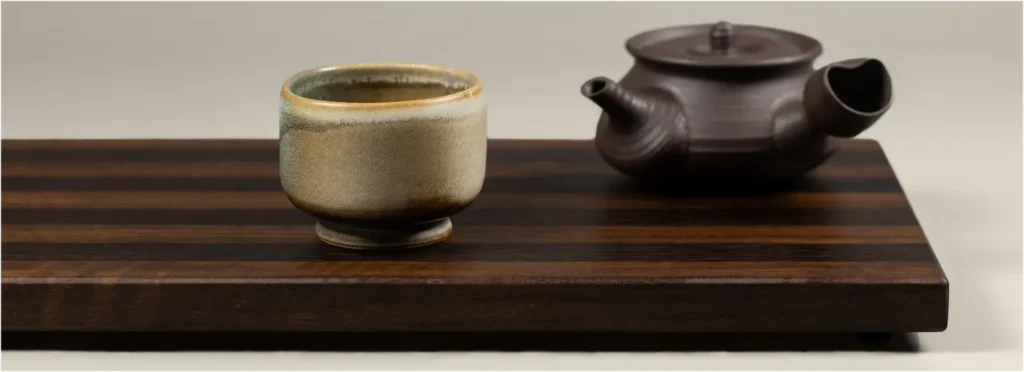
Advantages and considerations about Mongoy Wood
Durability
Thanks to its natural resistance to rotting and insects, Mongoy is ideal for products that require longevity. This includes everything from flooring and furniture to kitchen utensils such as cutting boards.
Sustainability
Many Mongoy suppliers offer FSC certification, guaranteeing that the extraction of this wood follows sustainable practices, respecting its natural environment.
Considerations at work
Despite its hardness, Mongoy can be worked relatively well, although it may require specific machinery due to its strength and presence of silicon. In addition, its finish responds well to treatments with oils and waxes, improving its appearance and useful life.
In short, Mongoy is an excellent choice for projects that require strength, durability and aesthetics. Whether in the manufacture of cutting boards or high quality furniture, this species offers a versatile and durable solution.
Our products with Mongoy wood
-
 UMBRA
UMBRAserving board
Price range: € 160,00 through € 180,00
FAQ: Frequently asked questions about mongoy wood
What is mongoy wood and where does it come from?
Mongoy wood, also known as ovangkol, comes from the Guibourtia ehie tree, native to West Africa, especially countries such as Nigeria, Cameroon, Gabon, Congo, and the Central African Republic.
What are the visual characteristics of mongoy wood?
It has a pale yellow sapwood and a heartwood that varies from grayish brown to dark brown with dark veins. Its grain is straight, occasionally interlocked, and its grain is fine to medium.
What is the density and hardness of mongoy wood?
It has a density of approximately 800–820 kg/m³ at 12% moisture content, classifying it as a heavy wood. Its Janka hardness is approximately 1,860 lbf (8,270 N), making it a hardwood.
How does mongoy wood behave in humid conditions?
It is a medium-tough wood with moderate dimensional stability. Its volumetric shrinkage coefficient is 0.49–0.55%, indicating a moderate tendency to warp with changes in humidity.
Is mongoy wood resistant to fungi and insects?
It has a high natural resistance to fungi and insects, making it suitable for applications in humid or outdoor environments without the need for intensive treatments.
What are common applications for mongoy wood?
It is used in fine furniture, cabinetmaking, interior and exterior carpentry, musical instrument making, decorative veneers, and turning.
Is mongoy wood easy to work with?
Sawing requires sharp tools due to its hardness. Planing may cause flaking in the presence of intertwined grain. Gluing is not difficult, while nailing and screwing require pre-drilling.
How does light affect the color of mongoy wood?
The sapwood of mongoy wood tends to darken, turning a grayish tone with exposure to light.
Can mongoy wood be easily impregnated with protective treatments?
Sapwood is impregnable, while heartwood is poorly impregnable, which can limit the effectiveness of certain protective treatments on the heartwood.
What special care does mongoy wood require?
Due to its moderate tendency to warp with changes in humidity and its high natural durability, it is recommended to store it under controlled conditions and apply appropriate protective treatments according to its intended use.
Otras entradas del blog
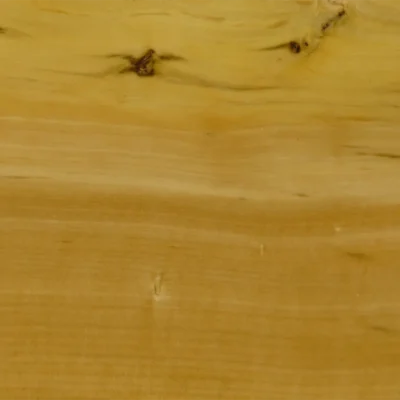
Boxwood: Uses and Characteristics

Black Wood: Species and Uses

Kotibé Wood: Uses and Characteristics
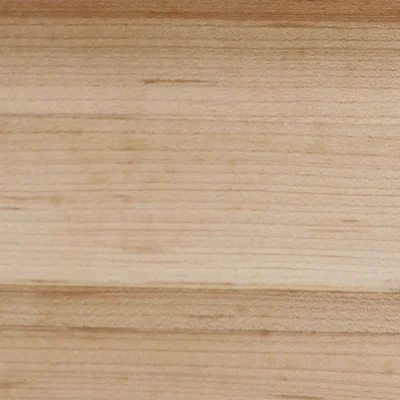
White wood: Common Species and Uses
Nuestras tablas de cortar:
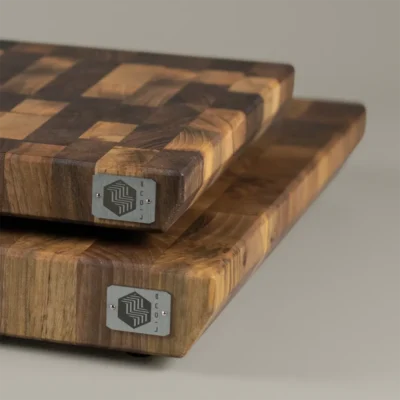
Pura
Walnut walnut butcher block
(copia)
Pura
Walnutwalnut butcher block

Pura
Walnut walnut butcher block
Pura
Walnutwalnut butcher block
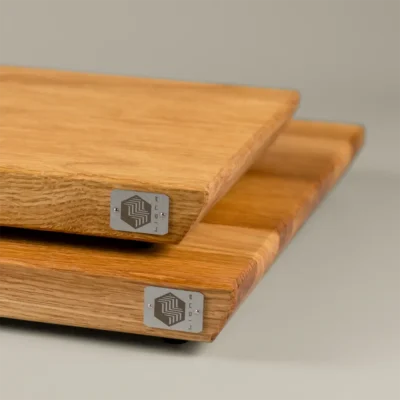
Linea
Oak oak cutting board
Linea
Oakoak cutting board
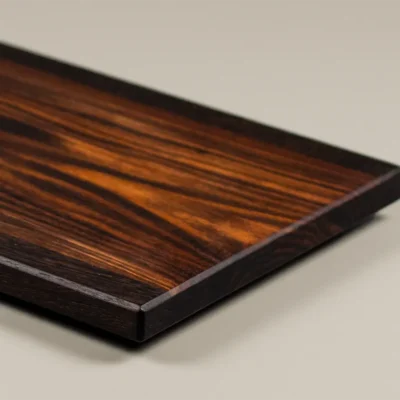
NUBILA
wooden cheese board
